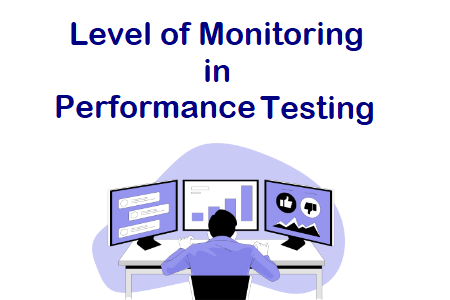Performance testing includes server monitoring as a crucial component. It is necessary in the production environment as well as during performance testing. All the production servers must be monitored to practice more about the systems’ performance and availability for large and complex software architecture. Many businesses require a better and more exact understanding of what is happening across their live environments instead of just having the one-time system monitoring during Performance Testing. Since modern infrastructure and applications are more dynamic, distributed, and modular in nature, spanning various settings, it leads to live monitoring requirements.
A study by Enterprise Management Associates (EMA) found that most businesses struggle to choose the best monitoring technique for controlling their environments. Over 65% of enterprise organisations have more than 10 monitoring tools at the same time. These monitoring tools function as compartmentalised solutions to meet the unique requirements of various teams. This inhibits the ability of different software teams to identify, recognise, and resolve performance issues.
This conventional monitoring method takes a lot of time and doesn’t offer the insights that enhance corporate results. So, what do you need to do to improve the monitoring methodology? For that purpose, you need to understand the different categories and analyse what level of mon
1. High-Level Performance Monitoring
High-level performance monitoring is a typical method and is conducted during performance testing. This is a basic level of monitoring. Such monitoring is done by some basic system performance commands like in Linux vmstat, mpstat etc. Refer to the articles to get more information about these commands and their use:
Actually, through performance utilities, you just gather the system’s performance stats and analyse them. You can adopt this methodology only in the absence of a monitoring tool. This is the lower level of software system monitoring.
Example: Linux Performance Utilities, Windows PerfMon
2. Status Level Performance Monitoring
Status-level performance monitoring is another basic approach to check the status of different components in the live. This is a basic level of system monitoring that involves only reporting if a component is up or down. Such monitoring is done by some basic monitoring tools which alarm and generate the alerts. Basically, system-level monitoring is more concerned with the availability of the component rather than the performance of the components.
Example: dotcom-monitor (Note: This tool also has advanced features)
3. Component Level Performance Monitoring
Component-level performance monitoring provides in-depth information about 3 main factors i.e. availability, performance and issue identification. Such type of monitoring collects the different stats and stuff like performance metrics, server logs and traces which help to understand the following parameters:
- Performance: The performance of the component is measured through performance metrics like CPU, Memory, Disk, I/O, and Network graphs.
- Debugging: The server logs provide the timing of the issue that occurred and help in debugging.
- Issue Identification: The trace of a transaction gives full details along with the elapsed time that helps to identify the root cause.
Example: Grafana (Graphs / Stats), Profiler etc.
4. Single View Performance Monitoring
Performance metrics, server logs, traces and alerts are multi-tool dependency stuff. So, the new requirement comes to centralise all the data in one location. In the single-view performance monitoring, you will have full stack visibility into every component. APM tools are best suited to this category.
By understanding what happened, when it happened, and why it happened, you may reduce the mean time to repair (MTTR) and handle expensive problems more rapidly.
Example: Dynatrace, New Relic, AppDynamics etc.
5. AI-Based Performance Monitoring
The monitoring tool based on Artificial intelligence provides predictive analytics and proactively detects anomalous behaviour across all the components. Early warning signals warn about upcoming issues and give the advance opportunity to prevent the problem. The time gained will at least help the issue resolution team to cut down on the issue’s remediation time.
Example: AIOps supported by multiple APM tools.
This article gives you a benchmark to evaluate your monitoring strategy and a road map for making changes. So, do not be limited only to the basic monitoring level of performance testing. Grow your skills and grab an AI-based performance monitoring approach. At last, you will gain predictive analytical capabilities that will help to predict issues and save the system and issue resolution time.
You may be interested:
- Performance Engineering Tutorial
- Performance Testing Tutorial
- LoadRunner Tutorial
- JMeter Tutorial
- NeoLoad Tutorial

